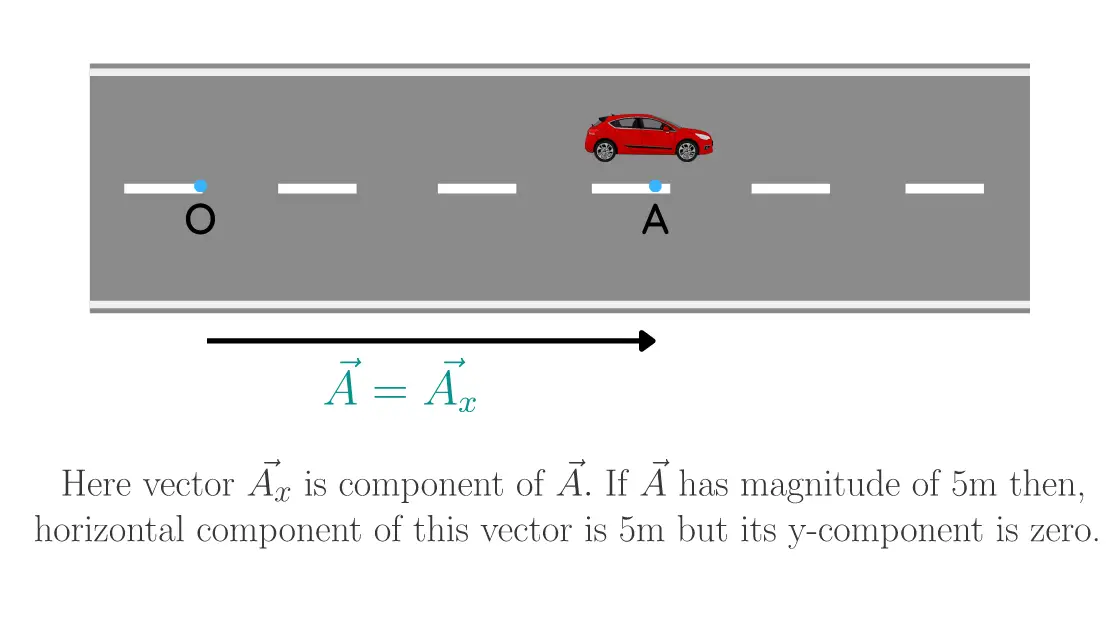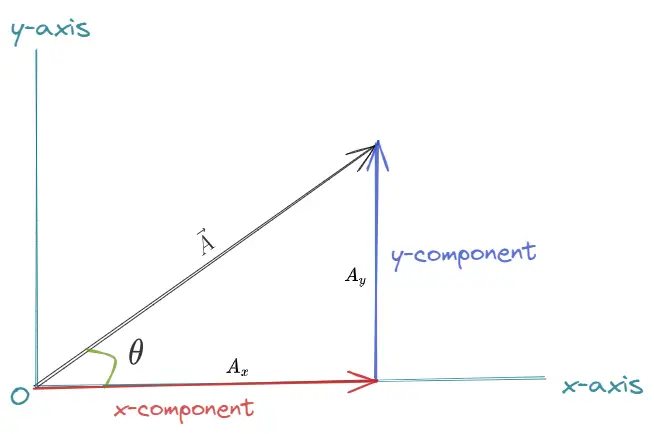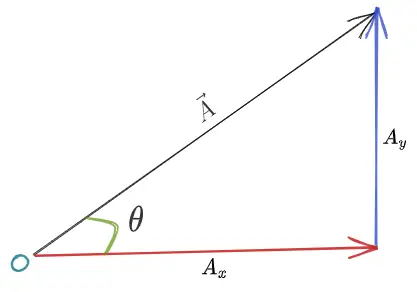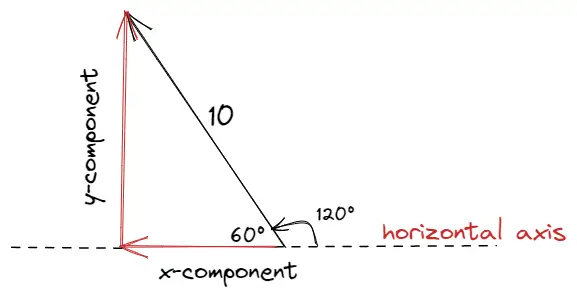This article will teach you how to find the x and y components of a vector. We already know what vectors and scalars are and how important they are when we study physics. Finding vector components is the opposite of vector addition, where we find vector addition of two or more vectors.
Here, a vector is split into two components. In physics problems, you are sometimes given an angle and a magnitude to describe a vector. You then have to use trigonometry to find the components.
Finding the horizontal component of a force F of magnitude 12 N acting on a block at a 30-degree angle to the horizontal axis is one such example. If you want to calculate the work done by this force in moving the block horizontally, you must first calculate the horizontal component of force F.
Components of a Vector
Vectors can exist in one, two, or three dimensions of space. The vector components are determined by the number of dimensions in our space.
Components of vectors in one dimension
If the object under consideration says a car is moving in a straight line, then it is said to have a rectilinear motion. In such a type of motion, we work in one-dimensional space.
Consider, that our car is moving from the left to the right direction. This $\vec A$ as shown below in the figure represents the vector of the moving car between points O and A. Because our car is only traveling in one direction, this vector $\vec A$ has only one component.
So, in one dimension, this vector can be broken into only an x-component.
$\vec A = \vec{A_x}$
where, $\vec{A_x}$ is x-component of vector $\vec A$
This $\vec{A_x}$ indicates how far the vector travels in the horizontal direction. Its motion could be to the left or to the right.
Components of vectors in two dimensions
Vectors in two dimensions mean that it has two directions of influence. This means it has two separate parts or components. There are x and y components in all two-dimensional vectors.
The x-component of a vector tells us how far the vector goes in the horizontal direction. The y-component tells us how far the vector travels in the vertical direction. We call them x and y components.
Let us understand this with the help of an example vector shown below in the figure.
This figure shows vector $\vec A$ broken down into two components
Vector x-component – $A_x$ and
Vector y-component – $A_y$.
Here, $\theta$ is the angle between the x and y components of the vector. As can be seen from the figure, the x-component and y-component of the vector go along the positive x-axis and positive y-axis of the coordinate system.
The vector and its components create a right-angled triangle, as shown below in the figure
As shown in the figure, you must use trigonometry to split this vector down into its components. The trig is simple once you know about angles and trigonometric ratios. The trigonometric ratios or trig functions express the relationship between the magnitude of the vector and its components.
Trigonometric ratios are only applicable to right-angle triangles. Each side of the right angle triangle is named.
- Adjacent: It is the side adjacent to the angle being considered.
- Opposite: It is the side opposite to the angle being considered.
- Hypotenuse: It is the side opposite to the right angle of the triangle (or the largest side).
How to find vector components from magnitude and angle
To find the horizontal and vertical components of our original vector $vec A$, use trig ratio formulas. So we have,
Cosine Function,
$cos\theta = \frac{Adjacent}{Hypotenuse}=\frac{A_x}{|\vec A|}$
or, $A_x=|\vec A|\cos\theta \tag{1}$
Sine Function,
$sin\theta = \frac{Opposite}{Hypotenuse}=\frac{A_y}{|\vec A|}$
or, $A_y=|\vec A|\sin\theta \tag{2}$
So, to determine the components of a vector given its magnitude and direction we use equations 1 and 2.
How to find direction of a vector given components?
To find the direction of the vector when its components $A_x$ and $A_y$ are given we use
$\tan\theta=\frac{A_x}{A_y}$
or,
$\theta=\tan^{-1}\left (\frac{A_x}{A_y} \right )$
This is how you identify the direction angle of a vector in a plane when you have knowledge of x and y components of a vector.
How do you find the magnitude of the vector given the components?
The Pythagorean theorem for right-angled triangles with lengths $A_x$ and $A_y$ can be used to calculate the magnitude of this vector $\vec A$. So,
$|\vec A|=\sqrt{A_x^2+A_v^2}$
So, the magnitude of a vector in a rectangular system is the square root of the sum of its components’ squares. The hypotenuse of a right-angled triangle always forms the resultant vector.
Vector Components Examples
Question 1 What are the X and Y components of force if a man pulls a container with a force of 100 N at a 45-degree angle?
Solution It is given in the question that the magnitude of force $|\vec F| = 100 N$ and it is pulled at an angle $\theta = 45^0$
From equation 1 vector components along positive x-axis is
$F_x=|\vec F|\cos \theta$
Putting in the values we get
$F_x=100\times\cos 45^0 = 100 \times \frac{1}{\sqrt 2} = 70.7 N$
From equation 2 vector components along positive y-axis is
$F_y=|\vec F|\sin\theta$
$F_y=100\times\sin 45^0 = 100 \times \frac{1}{\sqrt 2} = 70.7 N$
Question 2 Find the x and y components of a vector with a magnitude of 10 and a horizontal angle of 120°.
Solution It is given in the question that magnitude of vector is 10 and it makes an angle of 120^0 with the horizontal. If we fraw a figure for this vector it would look like this
From the figure, you can see that a right triangle has a 60° angle, which means you could write the following as a trig ratio for that angle using sine and cosine:
$cos\theta = \frac{Adjacent}{Hypotenuse}=\frac{\text{x-component}}{10}$
Sine Function,
$sin\theta = \frac{Opposite}{Hypotenuse}=\frac{\text{y-component}}{10}$
Rearranging them by solving for the y- and x-components gives:
x-component $=10\cos 60^0 = 5$
However, because the x-component is in the negative x-direction, it should most definitely be answered as $-5$
y-component $=10\sin60^0 = 8.6$
 Skip to content
Skip to content



